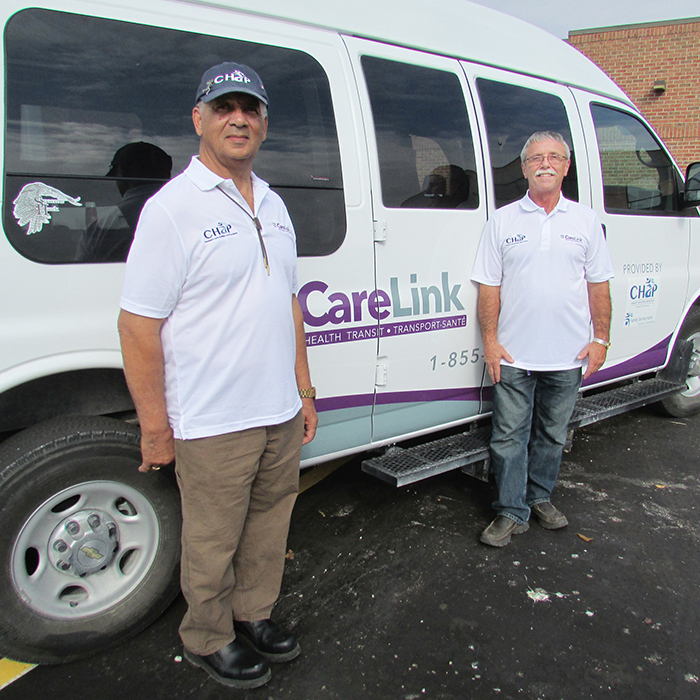
Eight agencies providing health transportation services to people in southwestern Ontario went into one room and came out united recently.
CareLink is the result of the groups working together, along with the Erie St. Clair Local Health Integration Network (LHIN).
Shannon Sasseville, director of communications and public affairs with the LHIN, said a great deal of work went into making CareLink come to life.
The linked agencies are Family Services Kent (CHAP), Canadian Red Cross, Lambton Elderly Outreach, and five agencies that fall under Windsor-Essex Community Transit.
“This is a celebration of what can happen when people work together,” she said at a Friday unveiling of CareLink. “Eight agencies and a common goal. That’s a great demonstration of partnership.”
Gary Switzer, CEO of the LHIN, called the financial investment to upgrade vehicles in the various fleets – about $1 million – a “relatively small amount of money invested” compared to the full $1.2 billion LHIN budget, but something that will have large impact.
“We funded $1 million to replace vehicles and we have put a standard in place to replace vehicles,” he said. “You have our commitment. We will always maintain these vehicles.”
Tracy Bailey, executive director of the Community Support Centre of Essex County, said the agencies have “waited a long time for that commitment.
“Transportation is a social determinant of health. It can be a barrier to good public health,” she added. “This system puts the client first.”
Switzer agreed, and said providing reliable transportation for the users is very important.
“One of the LHIN’s objectives is to keep people living at home for as long as possible, and transportation is important to do that,” he said.
Cheryl Tompkins, senior manager of the Canadian Red Cross, said the funding has led to the replacement of seven out of the regional unit’s 10 vehicles.
“A lot of these vehicles had more than 300,000 to 400,000 kilometres on them,” she said. “Our volunteer drivers have stuck with us. They love what you are doing.”
John Burden, one of the Red Cross drivers on hand at Friday’s announcement, said the development of CareLink is a great move, particularly in terms of rejuvenating the fleet.
“We have a couple of dogs. They were on their last legs,” he said of the Red Cross vehicles.”
The Red Cross wasn’t alone. Larry Grineage, a driver for Family Services Kent, said drivers have had vehicles quit on them in London. He said they have high kilometres on them and while being well maintained; they are at the end of their service lives.
Brad Davis, executive director of Family Services Kent, said transportation is often overlooked.
“Transportation is an important element to health care. It sounds kind of silly. But the reality is people to need to get from point A to point B,” he said. “We all have a role to play. Together we can achieve more.”
Sasseville summed up the importance of CareLink.
“It’s really about the folks who ride in those vehicles,” she said of the people being taken to and from health-care appointments.







